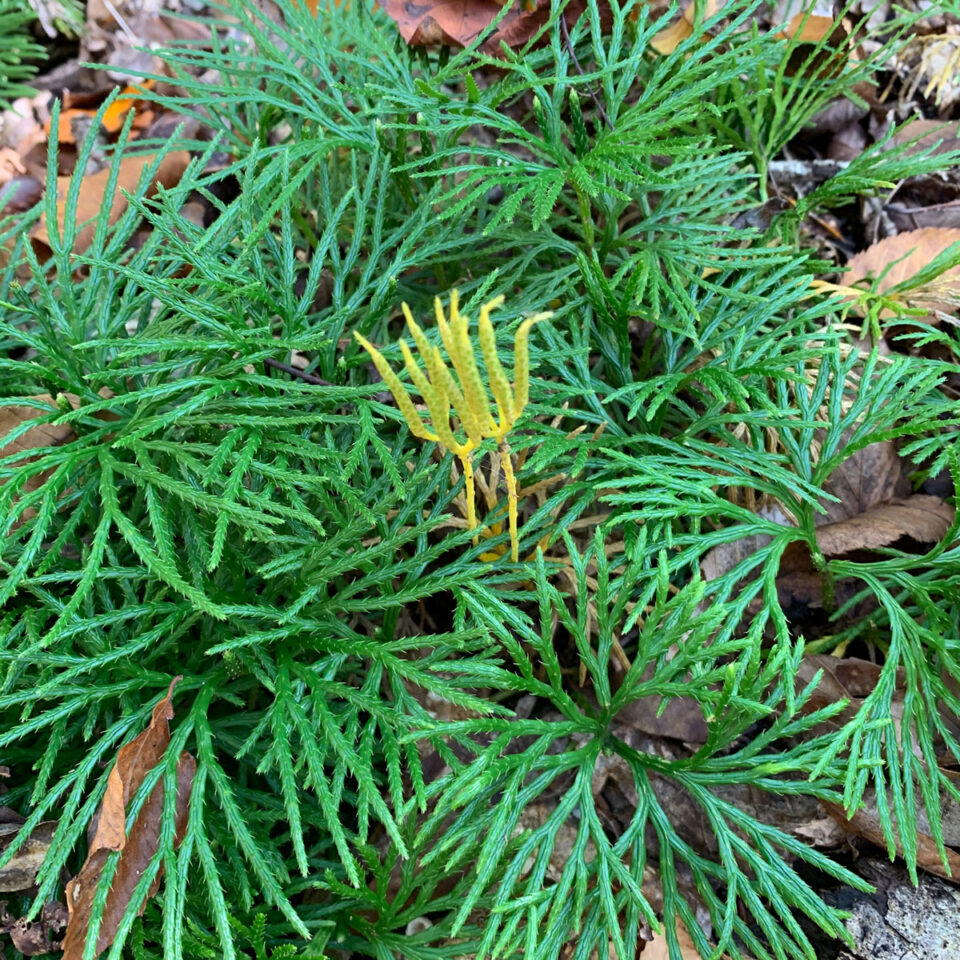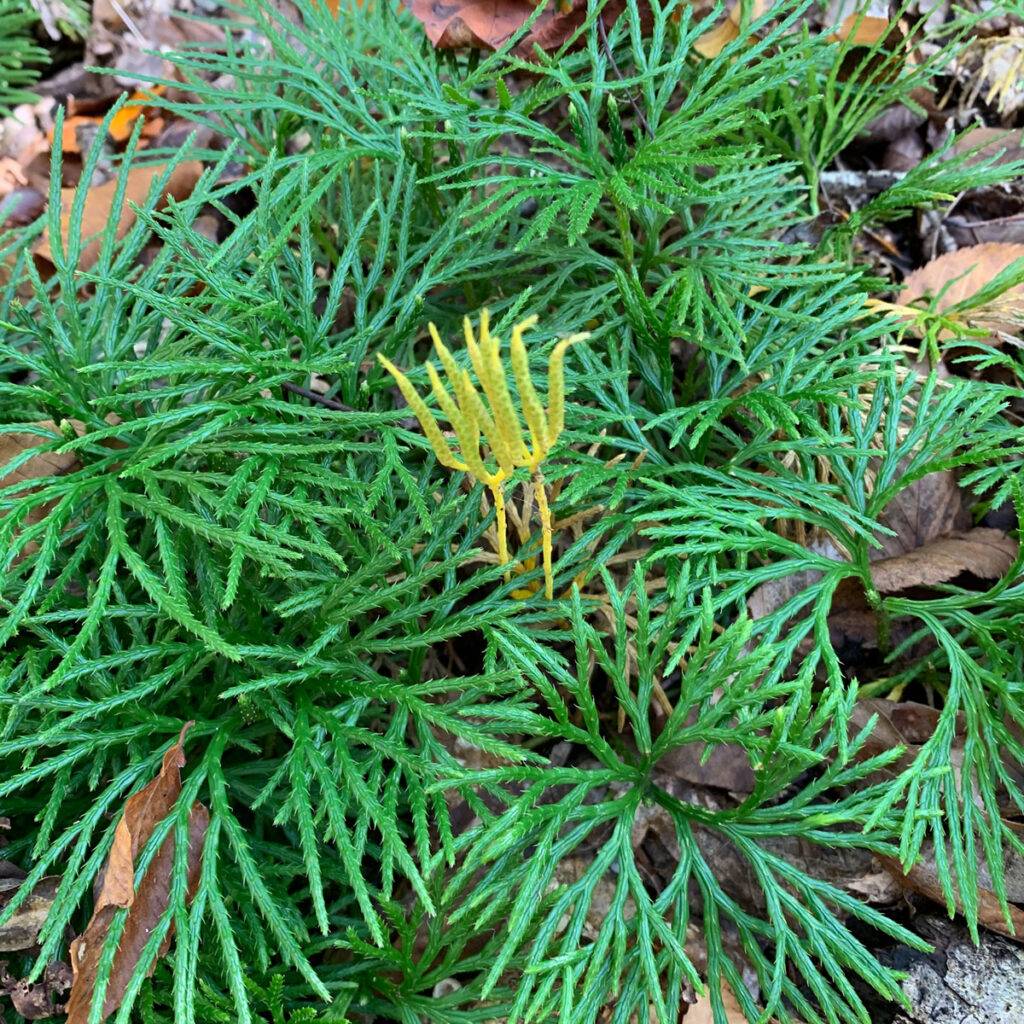“Fan Clubmoss,” an alternate name for Running Cedar, brings together two key characteristics of this plant. First, ‘fan’, which nicely describes the branches that spread out in an arched fan shape. Second, this is a clubmoss, which is like a fern, but not exactly. It’s a very very old plant, that evolved before trees… around 410 million years ago and evolved as one of the earliest groups of vascular plants. I mean, that’s REALLY cool! And here they still live today.
I used to confuse Running Cedar and another similar clubmoss called Princess Pine. Both grow here at Middle Way Nature Reserve.
What’s another cool thing about this clubmoss (and Princess Pine)? The spores, which release into the air when you brush by them, are highly flammable, due to their high fat content. Native Americans discovered the spores ignite with a bright light when burned (and I’ve read were used for some ceremonies). The ignited spores produce such a bright flash of light, that they were used to developed the first flash photography. They were also used in stage productions, in fireworks (up until the 1950s), and in chemistry labs. Those flash bulbs you see in going off in old movies in the 30s, 40s and 50s produced the bright light thanks to clubmoss spores! The Lycopodium powder (spores) are still collected today for various commercial uses. Read more about the clubmoss’ combustible spores!
Clubmosses got their name because in many of their species, these club-like projections or “candles” grow up above the small leaved, conifer-like stems.
Clubmoss are SUPER interesting. So interesting that I just have to share this from the Virginia Native Plant Society: “Clubmosses or Lycophytes evolved some 410 million years ago as one of the earliest groups of vascular plants (plants with special tissues xylem and phloem to conduct water and food, respectively, in this group of plants). Some 300-plus million years ago, tree forms of both clubmosses and horsetails along with ferns dominated the great coal swamps of the Carboniferous geological period. Tree forms of tree clubmosses that once reached heights of 100 feet have left an excellent fossil record of the woody tissue of tree forms.”
Alternate Names: Fan Clubmoss, Southern Ground Pine Family: Lycopodiaceae (Club-Moss Family) Habitat: Part-shade or shade, Well-drained, acidic, rich or poor soils. It does prefer dry conditions but tolerates some moisture. Identifiers: Evergreen, spreads by stems that lie just at the surface of the soil.
Botany Info: Lady Bird Johnson Wildflower Database
Running Cedar Plant I hadn’t seen Running Cedar trailing like a vine before, but here you see it hanging down towards the stream More trailing vine-like Running Cedar













